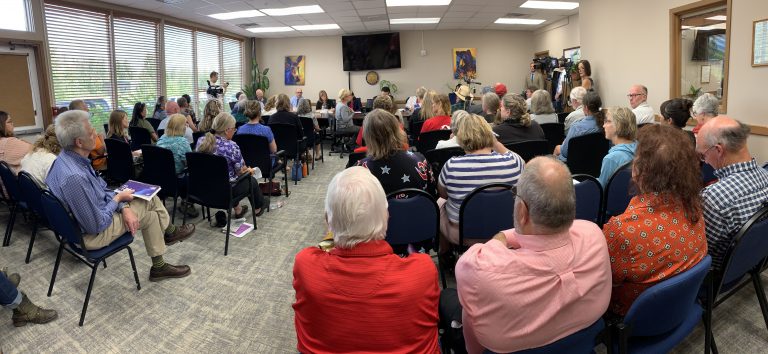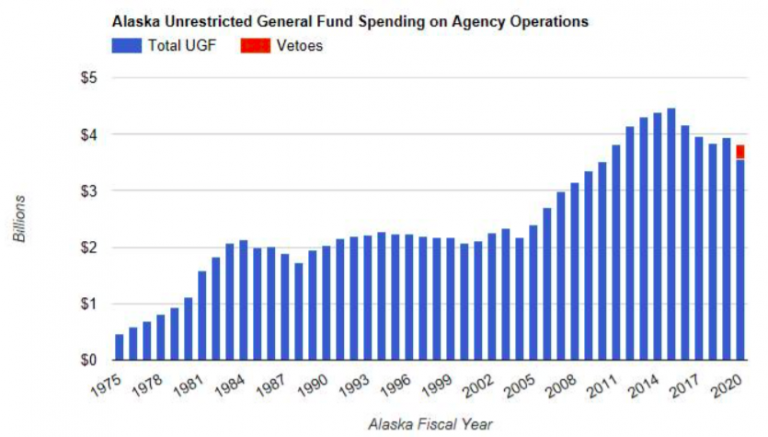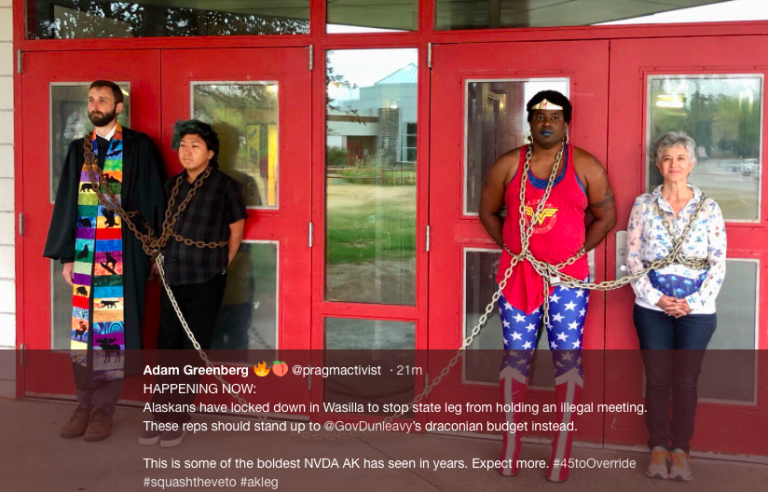The testimony before the House Finance Committee meeting in Wasilla on Tuesday showed the stark differences in how Alaskans view the role of the Permanent Fund dividend and the Rule of Law.
In Wasilla, the heart of conservative values, dozens of working class and retired Alaskans showed up at the Legislative Information Office to give their testimony about why the Legislature should follow the Rule of Law when it comes to the Permanent Fund dividend.
They came on walkers, in knee braces, with oxygen tanks, and on canes. They spoke about how Alaska Statute addresses how dividends are to be calculated, and they asked House Finance Committee to follow the law.
There were also Alaskans who testified that they really need the Permanent Fund dividend. They feel like it’s being stolen. One man said he was moving out of the state because he had really needed his dividend to live these past few years, and he can’t afford Alaska any longer. His house is now under contract.
Others showed up, too. They were the professionals. Some educators, some medical professionals in crisp shirts, some grant administrators for nonprofits. They were the people who were seeing their budgets cut, and they testified that the vetoes made by the Dunleavy Administration would do irreparable harm to the state’s economy and send Alaska into a spiral.
These were the two Alaskas in the room, with two different interpretations of laws and constitutional underpinnings.
Gunnar Knapp, retired director of the Institute for Social and Economic Research at University of Alaska, provided a blistering testimony about how the dividend formula is no longer working for Alaska. The formula needs to change to adapt to the growing needs of government. His remarks drew a large applause and from then on, each side applauded its own speakers as if to outdo the other side.
In addition to most House Finance Committee members, Senate President Cathy Giessel and House Speaker Bryce Edgmon made appearances, as did Senate Majority Leader Lyman Hoffman.
But the oddest appearance of all was that of former Walker-Mallott campaign manager John-Henry Heckendorn, who took notes for hours during the event. Who he is working for is a mystery but with campaign season warming up, and lawsuits now being threatened by former Attorney General Jahna Lindemuth, it looks like the Democrats called 1-800-JOHN-HENRY, campaign strategist to the stars.
None of the anarchists who had interrupted legislative meetings last week showed up at the meeting today, and police presence was heavy both inside the building and in the adjacent parking lot.
The House Finance Committee moves on to Fairbanks on Wednesday, where it will hear from a tsunami of university employees and related workers who are outraged at the 17 percent cut to the University of Alaska budget.







